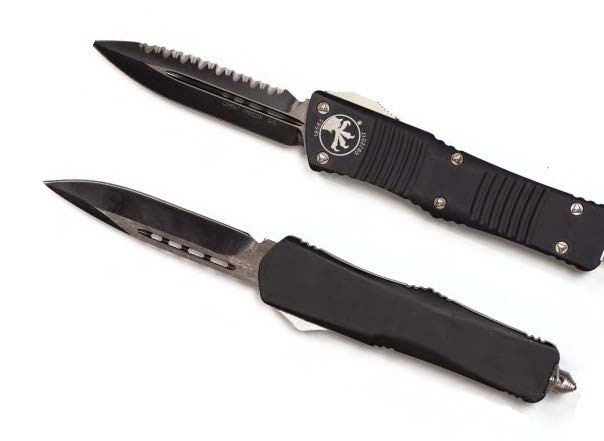
Editor’s note: With news of Canada ending imports of folding knives rocking the knife world, here is another important issue taking place at international borders.

Knife Companies Get Proactive
As part of his duties at Buck Knives, Joe Houser clicks through e-commerce websites like eBay, searching for fake Buck knives. When he finds a listing where someone is pedaling a counterfeit Buck, Houser works with the website to take the listing down and perhaps banish the seller from the site.
A few years ago, Buck didn’t have someone doing this job. But more and more fans of Buck Knives were sending their blades to the company’s warranty department only to learn their cherished knives really weren’t Bucks at all. Someone had ripped off the designs, piggybacking off Buck’s name and reputation to sell a shell of a knife to a swindled customer.
Counterfeiting may be the most recent challenge to adversely affect the knife industry. Over the past year or two, counterfeiters have gotten smarter, mimicking knife designs better. And thanks to the rise of international e-commerce websites, it’s harder to stop shipments of illegal knives entering the country because many come through in onesies and twosies, sent direct to the buyer through FedEx, UPS and other shipping outfits.
Bad for Collectors, Bad for Business
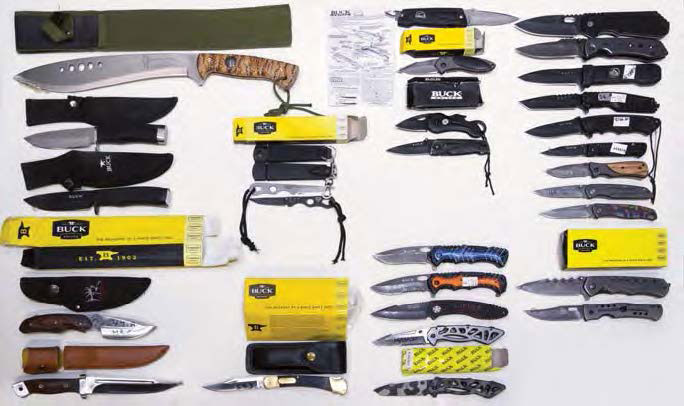
Buck took a dozen of the counterfeits and gave them a Rockwell hardness test.
“None of the blades, not one, are made of hardened steel. They are very cheaply made and fall apart quite easily,” Hauser wrote by e-mail. “I know of one model of Buck’s that I see counterfeited where the producers of the knife did not even install the linerlock. The blade had nothing at all to hold it open or closed.”
Research by the American Knife & Tool Institute (AKTI), a leading organization fighting for common-sense knife laws, indicates U.S. manufacturers lose 10 percent in sales annually to counterfeiting.
As a result, AKTI officials estimate counterfeit blades siphon about $95 million from the knife industry every year. It’s enough to erode the bottom line of knife manufacturers providing American jobs. And if the problem is to be solved, it will take the whole of the knife industry, AKTI officials say.
U.S. Government Struggles to Keep Up
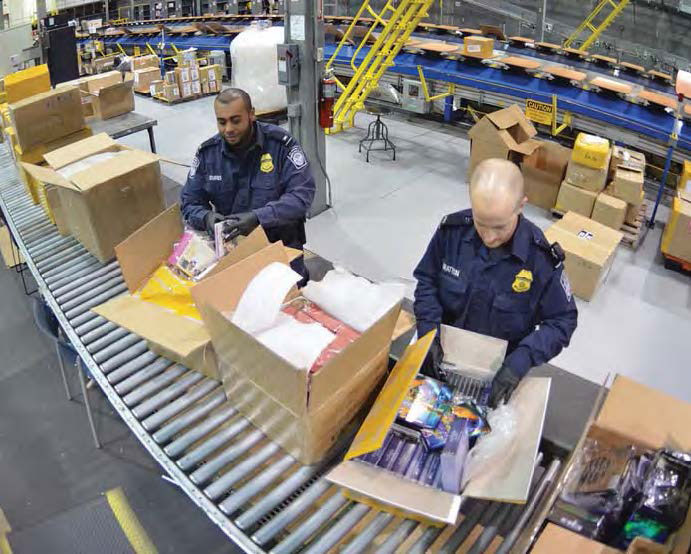
Gregory Moore, public affairs specialist with U.S. Customs and Border Protection (CBP), said Customs made 31,500 seizures in 2016 of products it found to have 77 violated intellectual property rights—52 percent more products in fiscal year 2016 than in 2014. The increase presents a challenge for the agency.
“With the global rise of e-commerce and online shipping, the number of small packages containing counterfeit goods continues to rise,” Moore wrote. “Ninety percent of the seizures in fiscal year 2016 were small packages shipped through express carriers or international mail. The increase of [goods infringing on intellectual property rights] in the small-package environment creates both a logistical and enforcement challenge for CBP.”
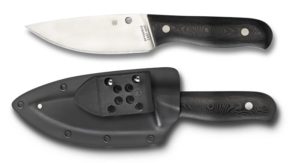
Counterfeit knives make up less than 1 percent of the products Customs seizes that it considers a threat to health and safety, a category that also includes counterfeit pharmaceuticals and sporting goods. After all, poor steel can cause a blade to snap, a pivot to fail, etc., increasing the chances of injury or even death.
Besides, seeing a knife being ripped off and made with poor materials stinks.
“Well, it’s frustrating,” said Doug Ritter, executive director of the other leading organization dedicated to common-sense knife laws, Knife Rights. Ritter also has designed knives for CRKT and Benchmade.
Most honest knives are derivatives of older knives, Ritter said, where knifemakers seek to improve the designs and make a better knife.
“That’s the way stuff develops,” Ritter said.
Meanwhile, the organization spearheading the effort against counterfeit knives is AKTI.
“We encourage them in their efforts and hope they are successful because these counterfeits hurt everyone in the knife community,” Ritter wrote.
Counterfeiters Get Smaller, More Numerous
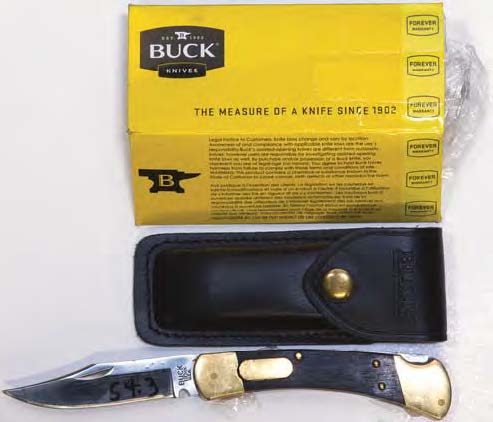
CRKT President Rod Bremer’s interest in counterfeit knives began to grow about five years ago when he started noticing more and more counterfeits from Southeast Asia. Today, he noted, most counterfeit knives originate from China.
Bremer, who chairs AKTI’s anti-counterfeiting committee, said most counterfeiters have small operations—simply working out of a garage—making them hard to track down. Sometimes they copy manufacturers’ knives right down to the packaging and warranties that are honored for genuine models only. Often, the counterfeiters try to catch the eye of buyers looking for a deal.
Compared to legitimate knives, Bremer said, counterfeits are usually priced at 50 to 70 percent of the MSRP of the genuine article. For example, one American knife company manufactures a fixed blade for $425 of which a Chinese e-commerce site recently listed a counterfeit—complete with the company’s logos on the packaging—for about $41.
Some counterfeiters have become so sophisticated that knife companies must look at machining marks and other small details to identify the real thing, similar to identifying counterfeit currency.
These details are kept secret by the companies lest the knowledge falls into the hands of counterfeiters.
What Can be Done?
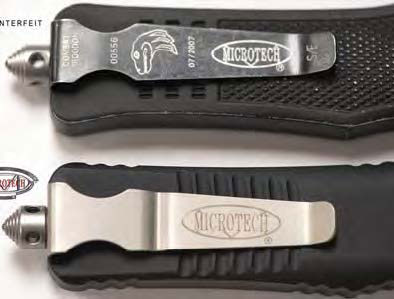
Bremer said the knife industry’s most comprehensive strategy is to play a full-court press, including being vigilant in asking e-commerce sites to remove listings of counterfeit models. If the knife industry as a whole makes it a “pain in the butt” to sell bogus knives, he said, then the bad actors may move to more lucrative products.
“Counterfeiters are not particularly selective,” Bremer observed. “They just want to knock somebody’s brand off, sell it and make a lot of money.”
Can the federal government build a virtual wall of blue-gloved U.S. Customs officers opening boxes and targeting shipments coming in from outside nations? Unfortunately, as Bremer noted, “I don’t think they have the manpower to catch all the shipments.”
Stop by any major port, such as San Francisco or Savannah, and you’ll see container yards of goods miles and miles long. But not all is doom and gloom.
“China has gotten more aggressive on intellectual property,” Bremer said. “The new president of China has gotten pretty harsh on people that are knowingly ripping off patents, but the effort is clearly not as aggressive as most of us would like. And it’s going to take time.”
 NEXT STEP: Download Your Free KNIFE GUIDE Issue of BLADE Magazine
NEXT STEP: Download Your Free KNIFE GUIDE Issue of BLADE Magazine
BLADE’s annual Knife Guide Issue features the newest knives and sharpeners, plus knife and axe reviews, knife sheaths, kit knives and a Knife Industry Directory.Get your FREE digital PDF instant download of the annual Knife Guide. No, really! We will email it to you right now when you subscribe to the BLADE email newsletter.






